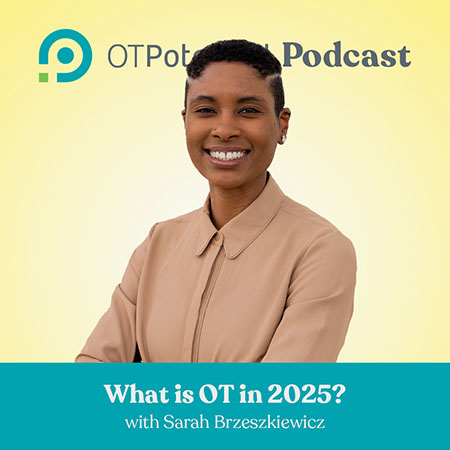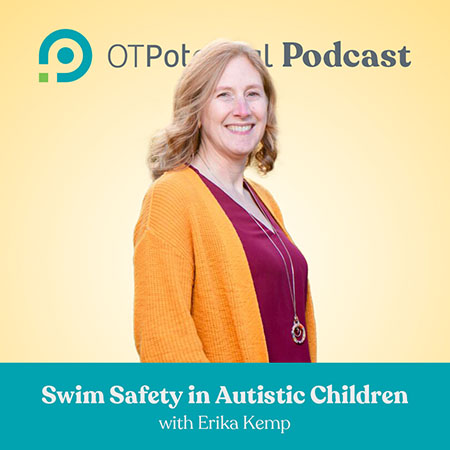
Early intervention is arguably the most important branch of occupational therapy (OT).
Your child is undergoing SO MUCH change and development at this time. And so, the impact that therapy can make during this age can be larger than at any other point in the lifespan—it can literally change the trajectory of their life.
As occupational therapy practitioners we are honored to be part of a team that helps bring this change about.
Before we dive in, I need to clarify:
Early intervention can be a broad term that simply refers to acting early when a health concern arises. But, in this article, we are specifically looking at early intervention as the services that are provided to young children.
In the United States, early intervention is a federally supported service for children 0-3 years of age that is carried out state by state. We’ll answer your general questions below. And, include steps for contacting your local early intervention program.
Here are the items we’ll cover:
- What is early intervention occupational therapy?
- Find an Early Intervention OT Near You
- What to do if you suspect a developmental delay?
- How do I begin early intervention occupational therapy?
- Who pays for EI occupational therapy?
- What is the role of OT on the larger EI team?
- Why does OT get recommended in EI?
- What does an OT EI session entail?
- When to discharge from early intervention OT?
- Early Intervention OT Resources
A note to parents and caregivers
Having a young child in your life means you have A LOT going on. And, if you suspect a developmental delay, that adds yet another layer of emotion.
But, we want you to know: we are here to support you and your child.
As occupational therapy practitioners, we work with people of all ages. And, we so often wish we could have seen our clients during this important window of time in infancy and toddlerhood. The support provided at this age can have lasting impacts on your child’s life.
So trust your gut. If you suspect a developmental delay, your first step is simply to make a phone call as we outline below.
What is early intervention occupational therapy?
Let’s start with early intervention in general:
Early intervention supports children and their families when the child is at risk of having a delay in reaching their developmental milestones. The services cover ages 0-3 in some areas and 0-5 in others.
In the United States, early intervention programs are supported by federal grants, but then carried out on a state by state basis. (The legislation behind this is known as The Individuals with Disabilities Education Act (IDEA) Part C.)
Ok, now let’s look at occupational therapy in EI:
Early intervention is a team-based approach—and occupational therapy practitioners may be part of that team. An occupational therapy practitioner may play a role in the initial evaluation of your child, then provide ongoing treatment. The general developmental areas covered by EI OT are:
- Physical development
- Cognitive development
- Communication development
- Social-emotional development
- Adaptive development
Watch EI occupational therapist, Sarah Putt, OTR/L, explain what makes early intervention OT unique.
See the Early Intervention OTs Near You
We want all new families to be aware of their local OT EI therapists. On our global OT directory, you can find the compassionate EI therapists near you. Keep reading to find out how to get connect with the EI services these therapists provide!
What to do if you suspect a developmental delay?
Your primary care provider should be helping you monitor whether your child is meeting developmental milestones.
But, no one knows your child like you do. These checklists can help you understand if your child is meeting age expected milestones:
If you suspect a delay, all you have to do is call your state’s EI program. You do not need a doctor’s referral. Trust your gut as a parent/caregiver.
The CDC recommends that you begin the call by sharing:
“I have concerns about my child’s development and I would like to have my child evaluated to find out if they are eligible for early intervention services.”
How do I begin early intervention occupational therapy?
Once you’ve contacted your state’s EI program, either an initial screen or full evaluation will be initiated with your consent.
An occupational therapy practitioner may be part of the team/qualified personnel that evaluates your child.
If it is determined that your child qualifies for early intervention, an individualized family service plan or IFSP will be developed by a multidisciplinary team. (This plan is what would initiate occupational therapy services for your child, if OT is determined to be a service your child could benefit from).
If it is determined that your child is not eligible for EI, that does not necessarily mean that you were wrong about them having a delay. Each state gets to determine how severe the delay must be to qualify for services. Some states require a more significant delay. Others only require the risk of a delay. This is a very technical but handy page to understand who qualifies in your state.
You should have access to your child’s evaluation, so in the event where there was a delay, but not enough to qualify for EI, another avenue you could consider is outpatient occupational therapy.
Who pays for EI occupational therapy?
EI services are one of the most incredible offerings that are funded by the federal government.
They are also perhaps the most underutilized and least understood. This may be because each state has a different program and addresses payment differently.
But, no matter what state you live in, this is true:
If you have a concern about your child’s development, you are entitled to a screen to see whether a full evaluation is needed.
If eligible these services should also be covered.
You may be asked to pay on a sliding scale for services, depending on your state. But, you CANNOT be denied services if you can’t afford to pay for them.
What is the role of OT on the larger EI team?
This work is so important it takes a team.
The members of an EI team varies by state and your particular case, but possible members could include:
- YOU! (the parent/caregiver)
- A case manager
- An occupational therapy practitioner
- A physical therapist
- A speech and language pathologist
- Other team members might include, but are not limited to a vision and hearing specialist, developmental specialist, special instructor, etc.
Why does OT get recommended in EI?
The way that EI programs works is different, but some reasons that a child may be recommended to OT specifically might include:
- Challenges with self care tasks
- Feeding difficulties
- Major disruptions to daily routine i.e. sleep, transitions, play, mealtime
- Motor delays
- Sensory processing differences
To do an initial screen and ultimately to receive services, your child does NOT have to have a particular diagnosis. Some common diagnoses and conditions we see, though, include:
- Autism spectrum disorder (ASD)
- Cerebral palsy
- Down syndrome
- Low birth weight
- Substance exposure
What does an OT EI session entail?
Your EI occupational therapy practitioner will coordinate with your family to find a time to meet with you that is usually 30 min to an hour.
These sessions can take place in your home or in a public setting that is familiar to your child, like a park, daycare, or a library. Some areas may even offer teletherapy.
An adult should be present and, if possible, available to participate in the session. We generally use a family centered model. During our treatment time, we of course strive to make our sessions engaging for the child and build on their strengths. But, we also want to be supporting YOU, the parent/caregiver—answering your questions, collaborating with you, and giving you the support and tools you need to succeed. Your child’s health is intertwined with your health.
In our sessions, we will be supporting you with addressing areas of concern. These may include:
- Bath time
- Dressing
- Mealtime
- Play time
- Potty time
- Sleep
- Transitions
You can read more about specific pediatric OT interventions here. You can also read about specific pediatric interventions for cerebral palsy here.
When to discharge from early intervention OT?
Just because your child reaches the end of EI at age 3 or 5, does not mean that support ends for you and your family.
As your child approaches school age, they may be covered by another portion of IDEA (Part B), which means the school is responsible for a free and appropriate education for children with disabilities. And in this case therapy may be part of an individualized education plan (IEP), which could entail school-based OT.
When and how this transition from an IFSP to an IEP looks different state by state.
That being said, beginning with EI does not mean your child will be in ongoing therapy forever. For example, your child may meet their goals related to occupational therapy, and if the team agrees they may be discharged from that particular service.
Keep in mind that having your child in an early intervention program is optional and if you decide that you no longer want to partake in it, you can choose to discharge your child from occupational therapy services or the EI program in general.
Early Intervention OT Resources
There is SO MUCH to learn about the important developmental window of early childhood. Here are some resources you may find handy:
Resources about the importance of early interventions:
- 1000 Days
- Baby’s Brain Begins Now (TheUrban Child Institute)
- Why act early if you are concerned about development? (CDC)
- Zero to Three: Early Connections that Last a Lifetime
Resources about early intervention services:
- IDEA Part C (Federal legislation related to early intervention)
- Links to each state’s EI program (CDC)
- Overview of Early Intervention (Parent Center Hub)
- What is Early Intervention (Understood.org)
Support for families during this time:
- Postpartum Support International
- Retro Baby: Cut Back on All the Gear and Boost Your Baby’s Development
EI OT resources for therapists!
- EI Service Delivery Approaches and Models
- Harvard Center on the Developing Child
- Increasing Equity in Early Intervention
- National Institute for Children’s Health Quality
- Parents as Teachers
- Real OTs of Early Intervention (Podcast co-hosted by Sarah Putt, OTR/L 🙂)
Bottomline—is it worth it to see an EI OT?
YES! There is no more important window than the first two years of life, as your child’s brain is developing so rapidly. Changes made during this time can have a ripple effect on their health like at no other point in the lifespan.
Whether or not you end up seeing an OT, we hope if you have any concerns you reach out to the early intervention services in your area.







2 replies on “Early Intervention Occupational Therapy Guide”
I have a pediatric private practice in NJ and have been proving school-based and Early Intervention services for 23 years. I. would love to become a part of this incredible network.
I’m so glad you found us, Dawn! I saw that you just joined the Club! Hope to see you on the directory soon 🙂